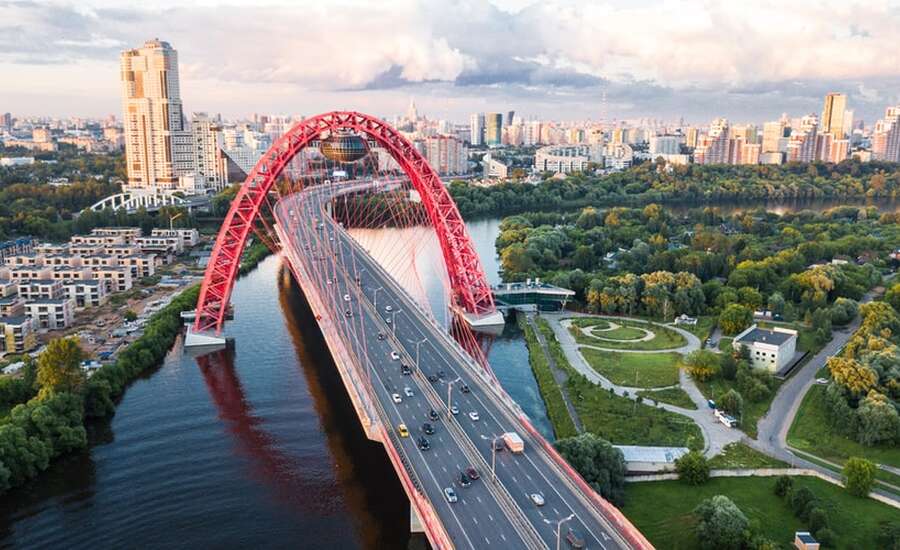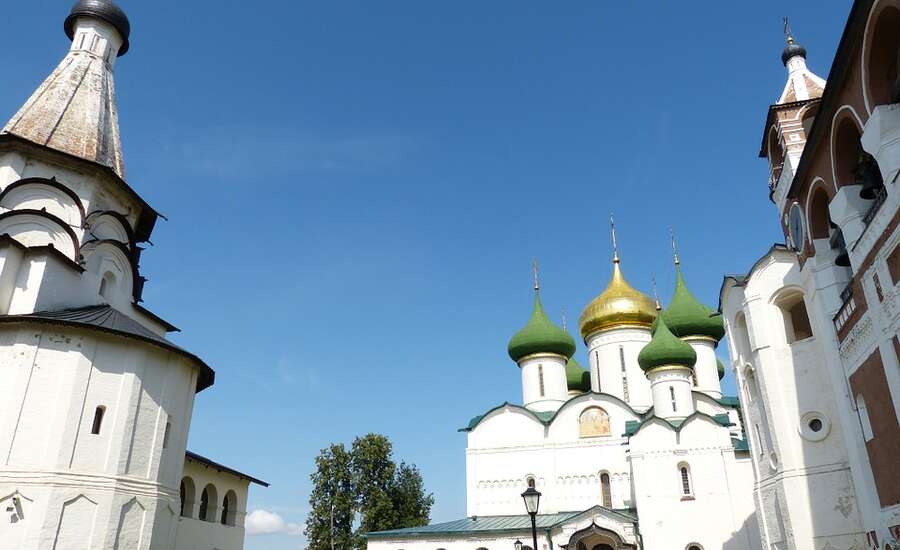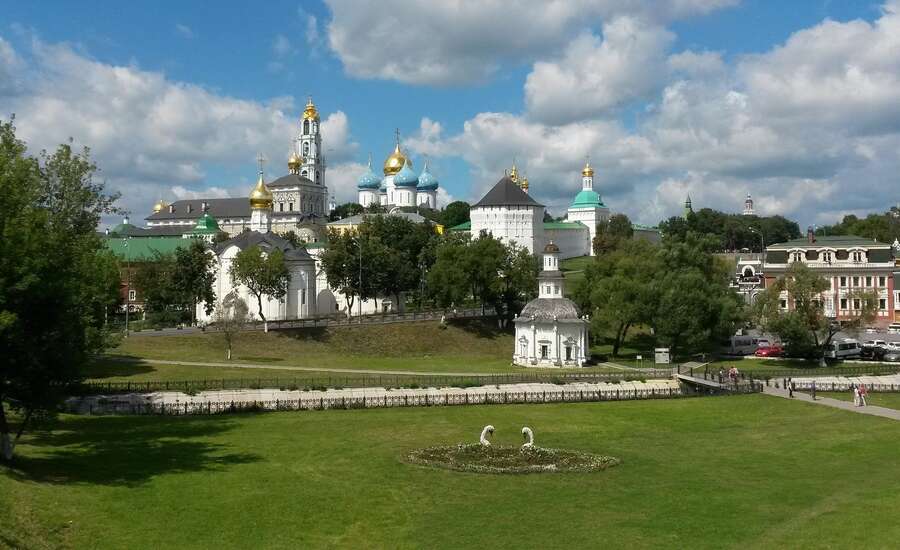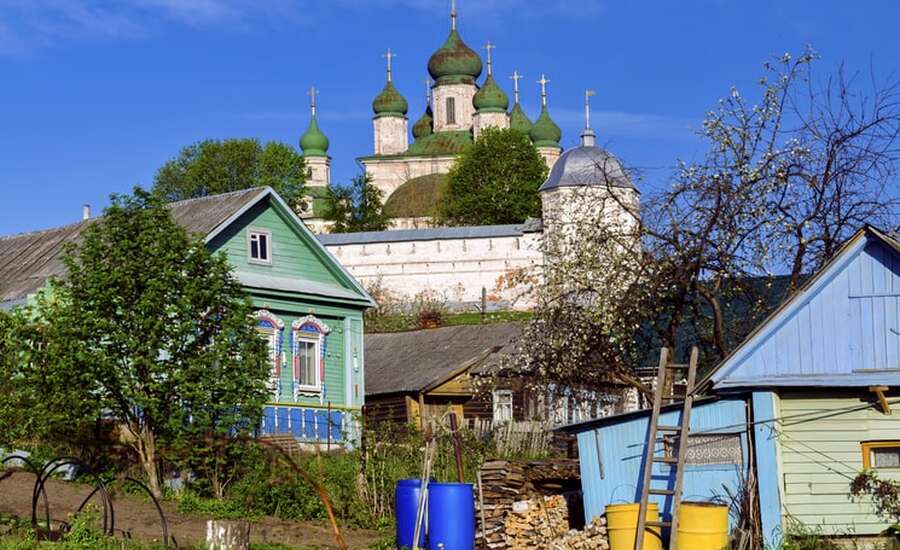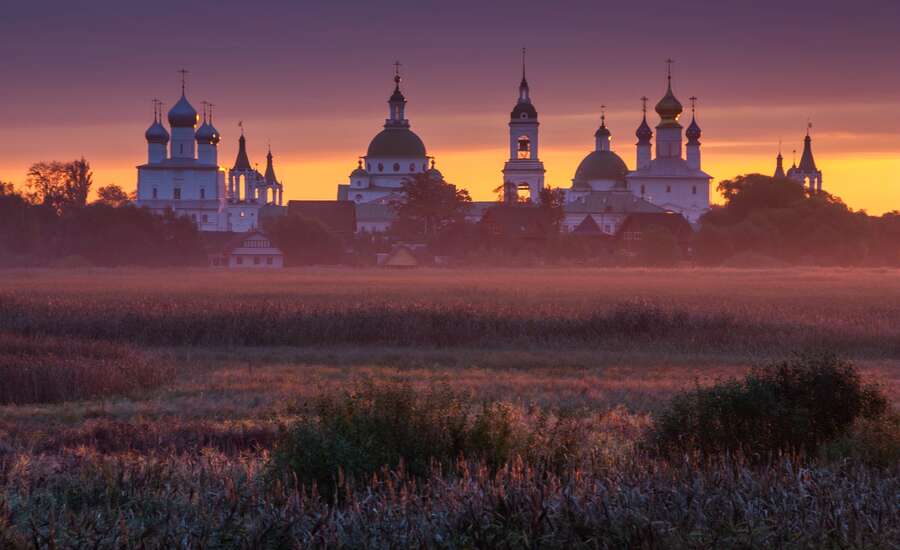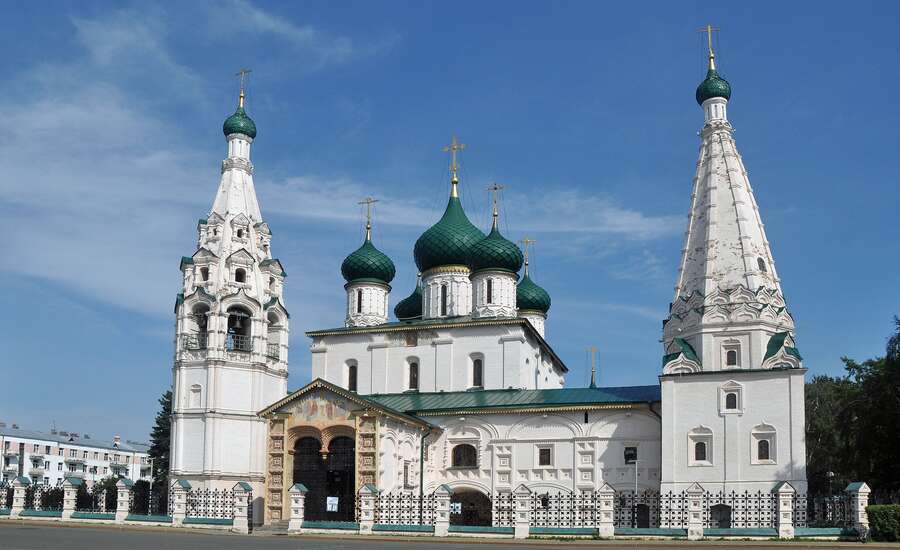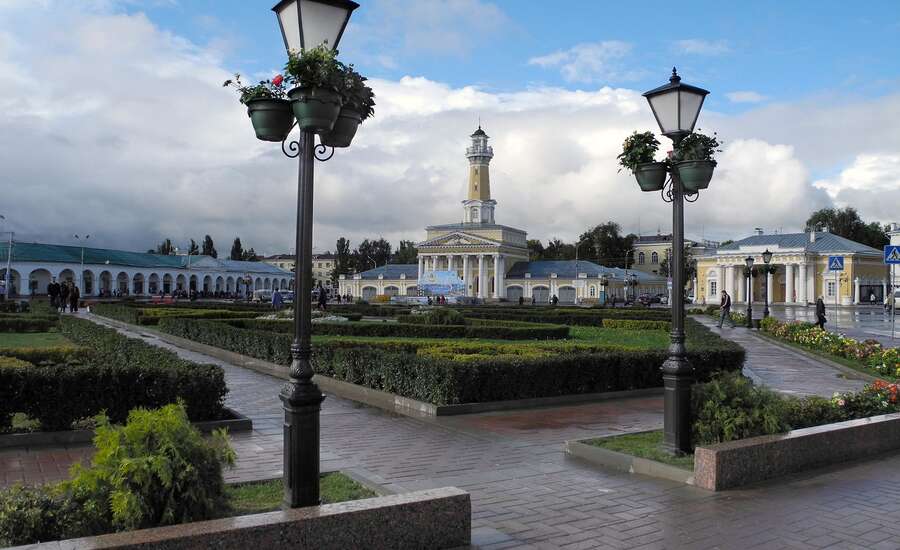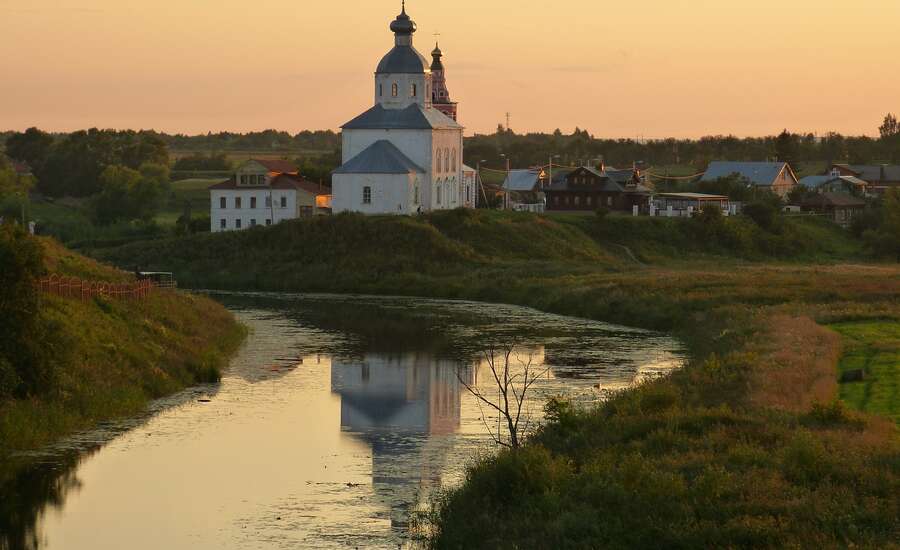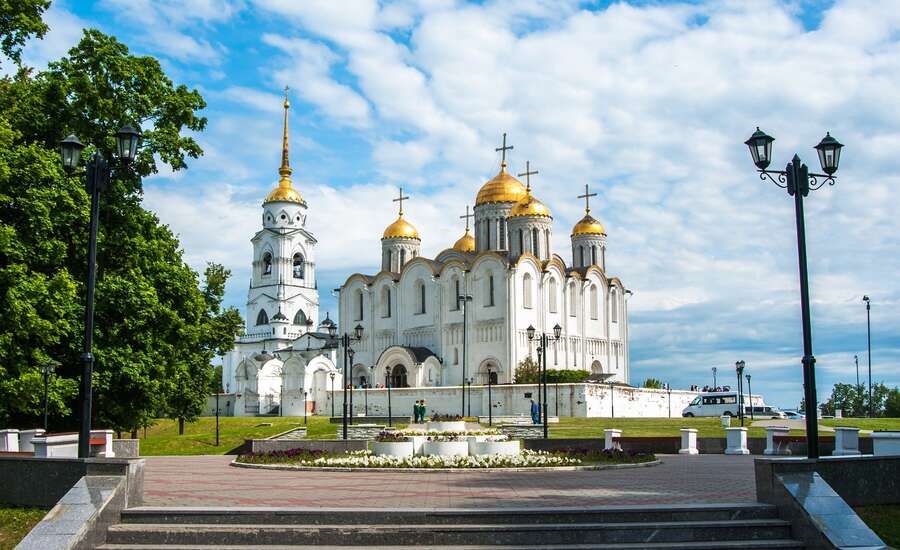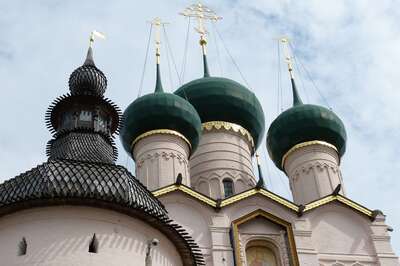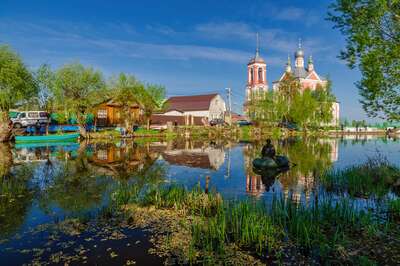Central Federal District
Photo by Alexander Smagin on Unsplash
What is There to See in Central Russia?
- Moscow is Russia’s capital and its political center. Moscow and the Central region with 10 million inhabitants are the country’s most populated and developed area.
- The Moscow region has lots of wonderful churches and also boasts Russia’s famous birch tree landscape. The group of ancient Russian towns that surround the city in a circular pattern is known as the Golden Ring.
- Sergiev Posad is home to the St. Trinity Sergeius Lavra, a monastery that has become the center of Russian orthodoxy.
- Rostov is the oldest town in North-Eastern Russia and was founded in 862. It is mostly renowned for its splendid architecture.
- The biggest city along the route is Yaroslavl. Nowadays, it plays an important role in industry and culture, but it also offers beautiful architecture, churches, monasteries, parks and mansions.
- The most important features of Suzdal are the Kremlin encompassing the historical center of town and the museum of wooden architecture and peasant life.
- Vladimir used to be the most important town of the Rus’. Today it is home to over 325,000 people and also serves as the administrative center of the area.
Moscow
Moscow is the center of this region. It was founded in 1147 on Borovitsky hill and is mentioned for the first time in the Ipat'evskaya chronicle. In this long and fascinating chronicle, there is a story in which Yuri Dolgoruky (Yuri the long-armed) invites Duke Svyatoslav to "Come to me … in Moskov…" The modern name Moscow finally stuck only in the 14th century.
In the first half of 13th century Moscow gradually became the cultural and political center of the Russian people, however in the winter of 1237-1238 it was sacked and ruined by Mongol-Tatar tribes. Those damn Mongol-Tartars were always messing things up! Luckily, it soon recovered and became a center of a separate principality. In 1326, the residence of the leaders of the Russian Orthodox Church was moved from Vladimir to Moscow. At this time, the city became the political and spiritual center of Rus (a Nordic word meaning "the Russian Nation"). In 1712, Peter the Great moved the capital to St. Petersburg, where it remained for two centuries (good for Peter - St. Petersburg is in fact a much nicer place than Moscow!). In March of 1918, Lenin moved the capital back to Moscow.
Moscow is situated on the delta of the Moskva river. Today, its population is approximately 10 million. The city is the residence of President Putin (but he is actually from St. Petersburg) and the Russian Government. Moscow and the Central region is currently the most developed area in the entire country. Moscow has an international airport and the majority of train journeys in Russia start from train stations in the city center.
Learn more about Russia's capital in Moscow City Guide
The Moscow region
The region is situated in the center of the European part of Russia. This region is very Russian. It has all the marks of Russian Orthodoxy and the Russian character, even the language (dialect) differs from, let's say, the St. Petersburg area. Extremely beautiful, large, old, white churches are scattered throughout the land and the countryside abounds with Russia's legendary birch trees - the land is really inspiring! The climate is temperate continental. The average temperature in January is -10°C and in July +17°C. The Moscow region is a land of ancient towns and monasteries, century-old artistic traditions and buzzes with creative activity.
An interesting place to visit is the Novy Jerusalem Resurrection Monastery, which is situated in the town Istra. The Monastery was founded by the reformer of the Russian Orthodox Church, Patriarch Nikon (1605-1681) in 1658. Nikon's idea was to reconstruct the image of the Holy Land with the exact copy of the Church of the Holy Sepulcher on the bank of the Istra River near Moscow. The well-known architectural complex is included on the UNESCO list as a landmark of world culture.
The Golden Ring
The Golden Ring unites a special group of ancient Russian towns and cities not far from Moscow. The towns are arranged in a circular pattern around the capital, forming a ring. These towns, including Sergiev Posad (the center of Russian Orthodoxy), Rostov, Vladimir, Suzdal, Pereslavl Zalassky, Kostroma, and Ivanovo were built between the 11th and 17th centuries. Taking a Golden Ring tour is an excellent opportunity to view typical old Russian towns that are still surrounded by ancient Kremlins (walled fortresses), churches and monasteries. Today, these towns are often known as open air museums, and unique monuments of Russian architecture are kept and compiled there, reminding visitors of the dramatic events and colorful personalities that make up Russian history. Outside Suzdal and Kostroma are 2 interesting open-air architectural museums - entire wooden villages built to typify old Russian life. All the towns of the Golden Ring have been well restored, and many of the buildings are now museums tracing the history of the area that was the center of the Rus during their Golden Age, an age which lasted over four centuries.
Image by snow-dog from Pixabay
Sergiev Posad (formerly Zagorsk) is the most popular town on the Golden Ring route. Six centuries ago Sergeius of Radonezh, a monk who was destined to become one of the most honored Russian saints, founded the small settlement of Sergiev Posad and a monastery that later became the center of Russian Orthodoxy. The town is a jewel among the jewels of all other old, Russian towns and gives the visitor a marvelous glimpse into Russian life of six centuries ago. The St. Trinity Sergeius Lavra (monastery) in Zagorsk is a revered pilgrimage shrine and the monastery, which received the status of Lavra in 1744, is home to a quite interesting historical and art museum. Works by Andrey Rublev and other famous masters of the 15th-18th centuries can be found inside. The museum also displays ancient church plates, needlework, embroidery and church books.
Photo by Galina Tcarkova on Unsplash
Pereslavl Zalessky was founded in the 12th century in a charming area amidst cornfields and untouched forests. The entire area is sprinkled with well-preserved churches and monasteries. Visitors to the town can see ancient Russian architectural monuments of the Danilov, Fedorovsky and Goritsky Convents. They can also visit the Baltic Estate Museum, located in the suburbs of Pereslavl Zalessky and admire a beautiful view of the lake, where, incidentally, the Russian army was founded, from the Kremlin's bell-tower.
Photo by step-svetlana from Pixabay
Rostov (once known as Great Rostov) is the oldest town in North-Eastern Russia. The town was mentioned in chronicles as far back as 862. Rostov is famous for its splendid architectural design, numerous churches, and civil structures. Rostov itself has a rather peculiar layout. In the historical center of the city, built in the 16th century, stands the Dormition Cathedral, whose bells play one of the most enchanting chimes in Russia. Enamel miniature painting, or finift, has been Rostov's traditional craft since the early 18th century.
The town (population approximately 50,000) has recently been restored to its original grandeur. But while visitors usually expect to see Rostov the Great - large, majestic monuments and so on - now Rostov is a small provincial town with a very calm, slow way of life. Pieces of marvelous architecture are scattered almost casually along on the banks of the huge lake Nero. At the same time, the ancient vistas, small wooden bridges, abundance of flowers, the great Kremlin walls, and the old and very big cathedral and bell tower are sure to impress. Here in the heart of ancient Russia, with its white churches and lovely countryside, one can begin to understand the grandeur of Russian Orthodoxy. It is best to visit Rostov the Great in late spring, summer or early autumn to make the most of the town's excellent walks, and be sure to visit the Monastery of St. Jacob, take a rest in the summerhouse, and see its underground spring of holy water. You will never forget this wonderful part of ancient Russia.
Photo by tikhonnetpro from Pixabay
Yaroslavl is one of the largest towns in central Russia and is located on the banks of the Volga River. It was founded in 1010 and named after Prince Yaroslavl the Wise of Kiev. Its layout and architecture are among the best examples of early Russian urban planning and development, and it was an early centre of shipbuilding, attracting first the English, then the Dutch, Germans, French, and Spanish. Thanks to this international interest, Yaroslavl became very prosperous. As the English writer and adventurer Robert Brown wrote, this prosperity "found expression in a series of churches whose spacious proportions and richness of architectural decoration had no rival in Russia of their time". While Yaroslavl suffered through many years of troubles, it preserved its image: beautiful complexes of churches and monasteries, noble mansions and parks, not to mention a rich collection of icons and decorative folk art. As if this wasn't enough, Yaroslavl was also the home of the first Russian professional theater. Today, Yaroslavl is an important industrial, scientific and cultural center, with a population of almost 1 million. Above all, Yaroslavl is a very friendly city, and is ideal for exploration by foot. In addition to the features listed above, be sure to see the picturesque Strelka, where the river Kotorosl flows into the Volga.
Incidentally, the emblem of Yaroslavl - a bear with sickle - is associated with an amusing but strangely significant story. The legend goes that when Duke Vladimir Krasnoe Solnyshko accepted Christianity, he decided that all common people in the region would have to become Christians as well. The people of Yaroslavl area were pagans, and worshipped the big brown bear as their God, just as Indians hold cows as sacred. The town's residents were quite surprised at the Prince's order and didn't really want to worship any other God besides the bear. Anyway, a large bear was always walking around the town and, of course, no one wanted to risk hurting the animal. Knowing this, Vladimir armed with a sickle, went out and killed the poor bear in order to show everyone that it is just an animal and no saint or being with magical power. However, after he did this, it began to rain frogs and the sky turned green! (just kidding). From that moment on Christianity took hold in Russia, but the memory of the bear still lives on. Once you have sated yourself with the town of the bear, take a boat trip along the Volga and dock at our next stop - Kostroma.
Photo by mobinovyc from Pixabay
Kostroma is believed to have been founded by Prince Yuri Dolgoruky some time between 1152 and 1157. Kostroma stands on both sides of the Volga. The main part of the city, constructed in the early 18th century, has a classic Russian layout. The town contains numerous architectural monuments from the late 18th/early 19th century. The name of the town is closely connected with the Romanov dynasty and there is a Romanov museum inside the Ipat'yev Monastery. Once a bustling trade center, known as the "flax capital of the North", the town supplied Russia and Europe with the finest sailcloth. The center of Kostroma is quite ancient and was inhabited by the merchant class of the 16-19th centuries. Today, Kostroma continues to be a major center of the linen industry in Central Russia.
Back in the 17th century, the village of Ivanovo was was known as an industrial center specializing in the manufacturing of linen. It was granted the status of town and given the name Ivanovo-Voznesensk in 1871. Today Ivanovo is a modern city and a textile center.
A short distance from Ivanovo is the village of Palekh, which was a major icon-painting center before the revolution. A very special feature of Palekh is its position as the manufacturing base of papier-mache painted lacquered boxes. These handmade souvenirs are world famous and excellent examples of early Russian art and craftwork.
Suzdal is more than 100 years older than Moscow. The first written reference to the town is found in the best-selling Chronicle of 1024 A.D. Over 100 examples of old Russian architecture attract half-a-million visitors each year to this remarkable medieval town. Time seems to have stopped in Suzdal - the entire village is a perfection of spatial harmony. Dispersed in a picturesque and uniform manner throughout the town's territory, the architectural monuments form an ensemble of rare beauty and unity. It is hard to miss the walls of the ancient Kremline, which envelops the historical center of the town, but also look out for the museum of wooden architecture and peasant life, which is located close to the town center.
Photo by Сергей Горбачев from Pixabay
The town of Vladimir stands on the left bank of the Klyasma River. Founded in 1108 by Prince Vladimir Monomakh, it became the most powerful town of ancient Rus. In 1557, the capital of the Vladimir-Suzdal Principality was moved to Vladimir, where the sacred icon of the Virgin, which had once been brought from Constantinople, was located. The icon received the name "The Holy Virgin of Vladimir". Ancient monuments dating back to the 12th century remain in Vladimir and its suburbs. The main sights of the city are the towering Temple of the Assumption and the Dmitrievsky Temple, spectacularly located on the banks of the Klyazma River. Vladimir is also home to an outstanding monument of Russian defense architecture named the Golden Gates. Today, Vladimir is a bustling city of 325,000 people and is the administrative head of the region.
